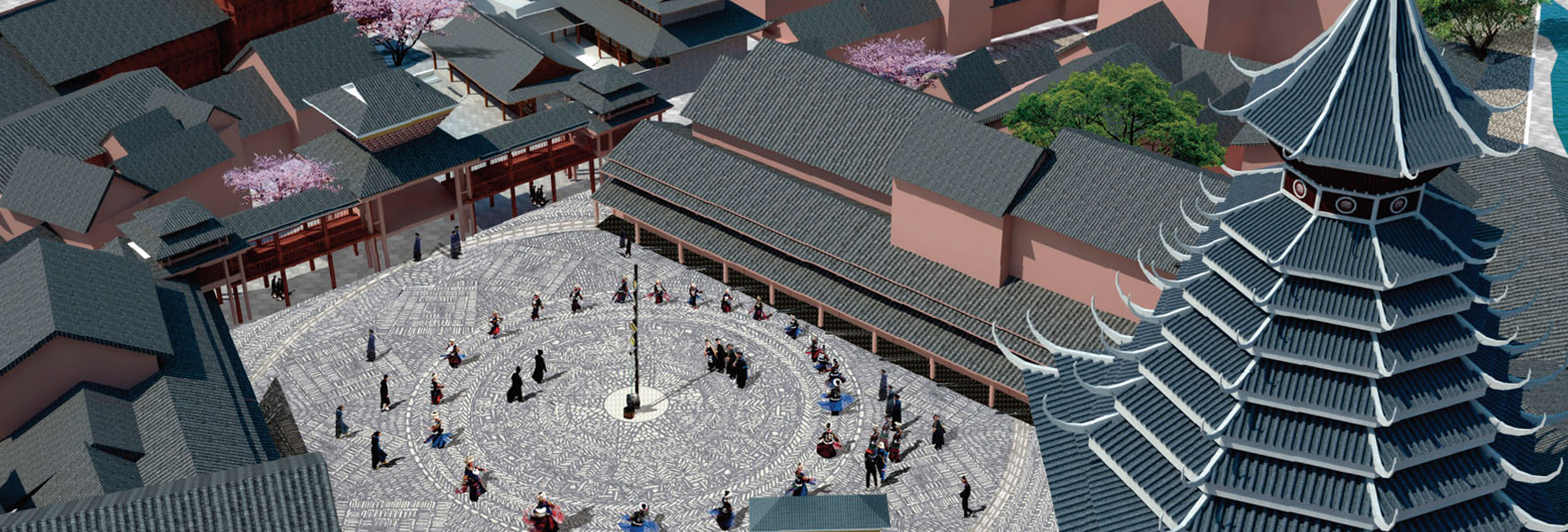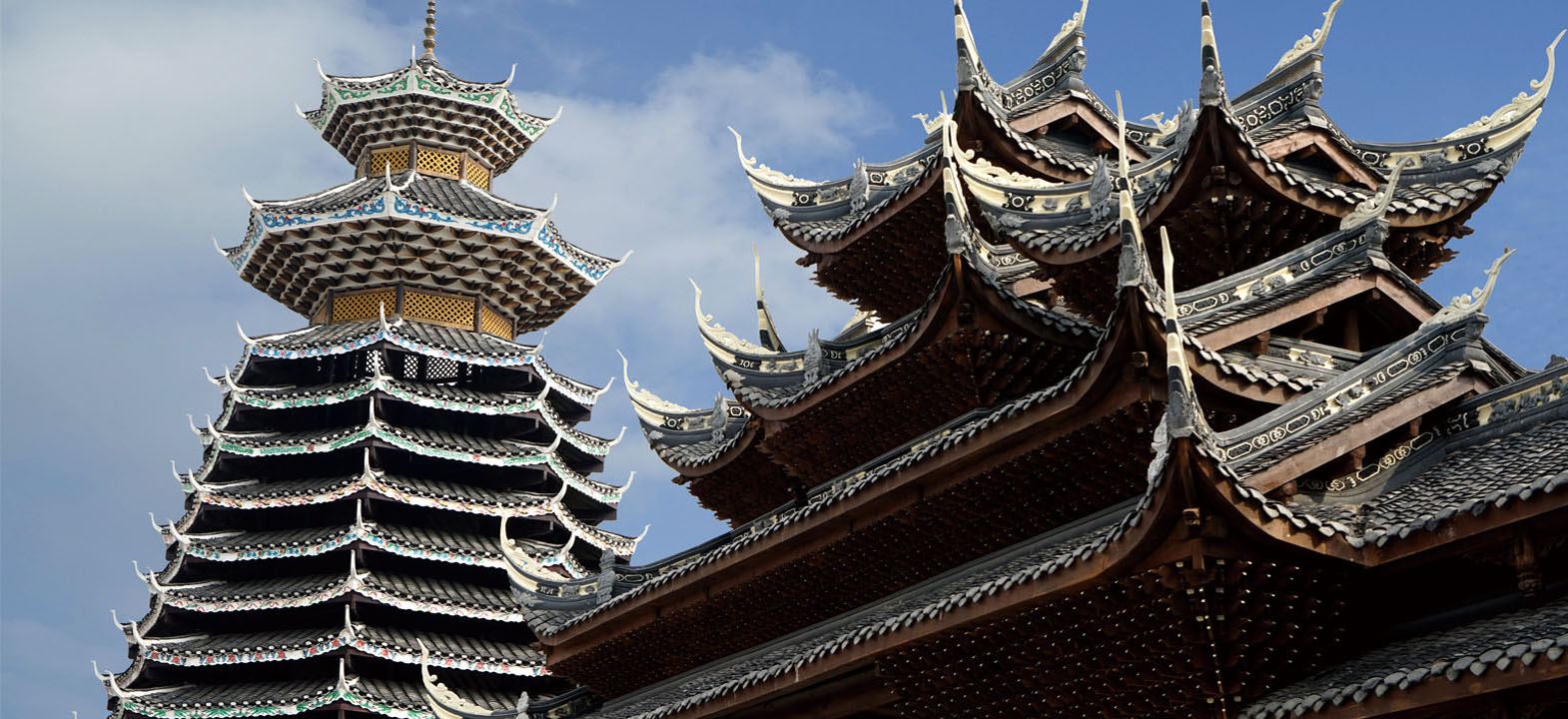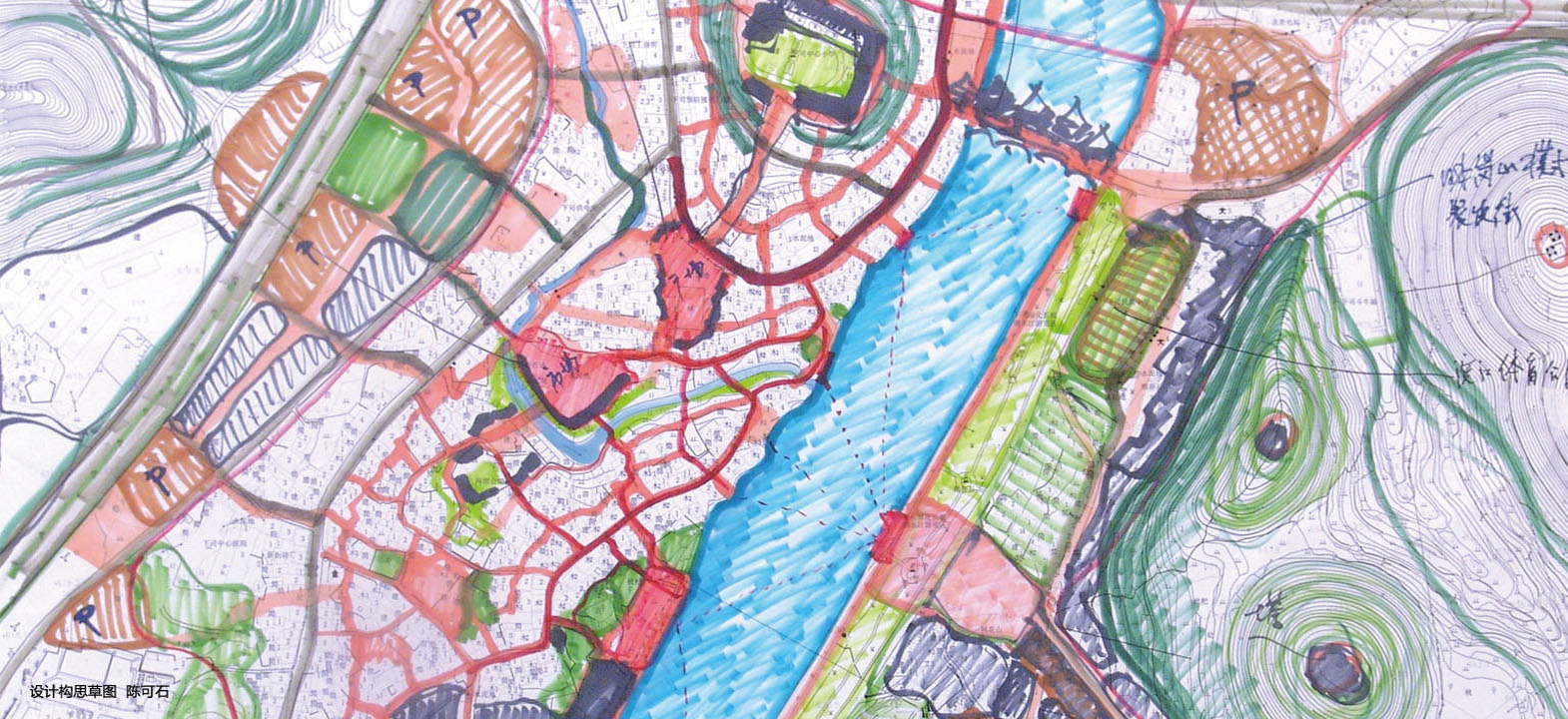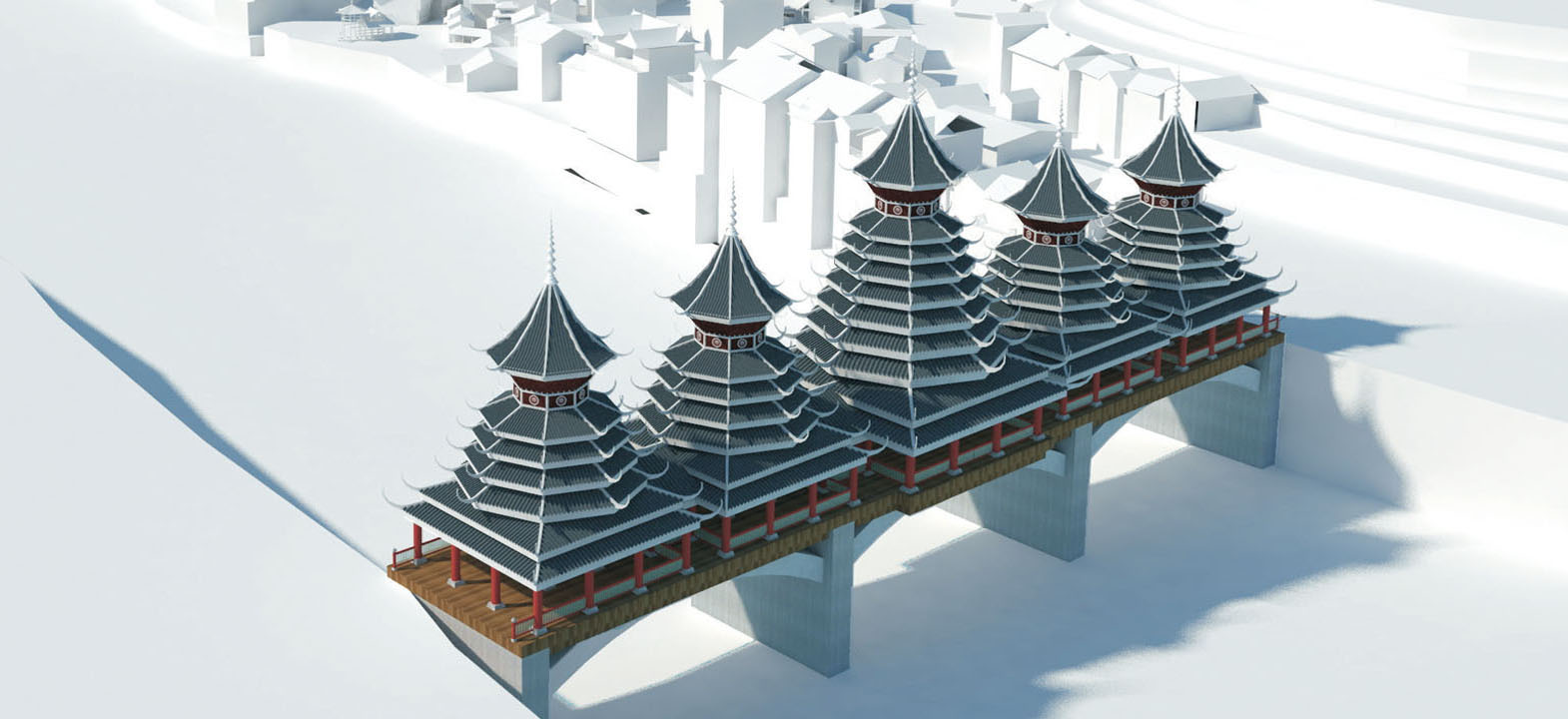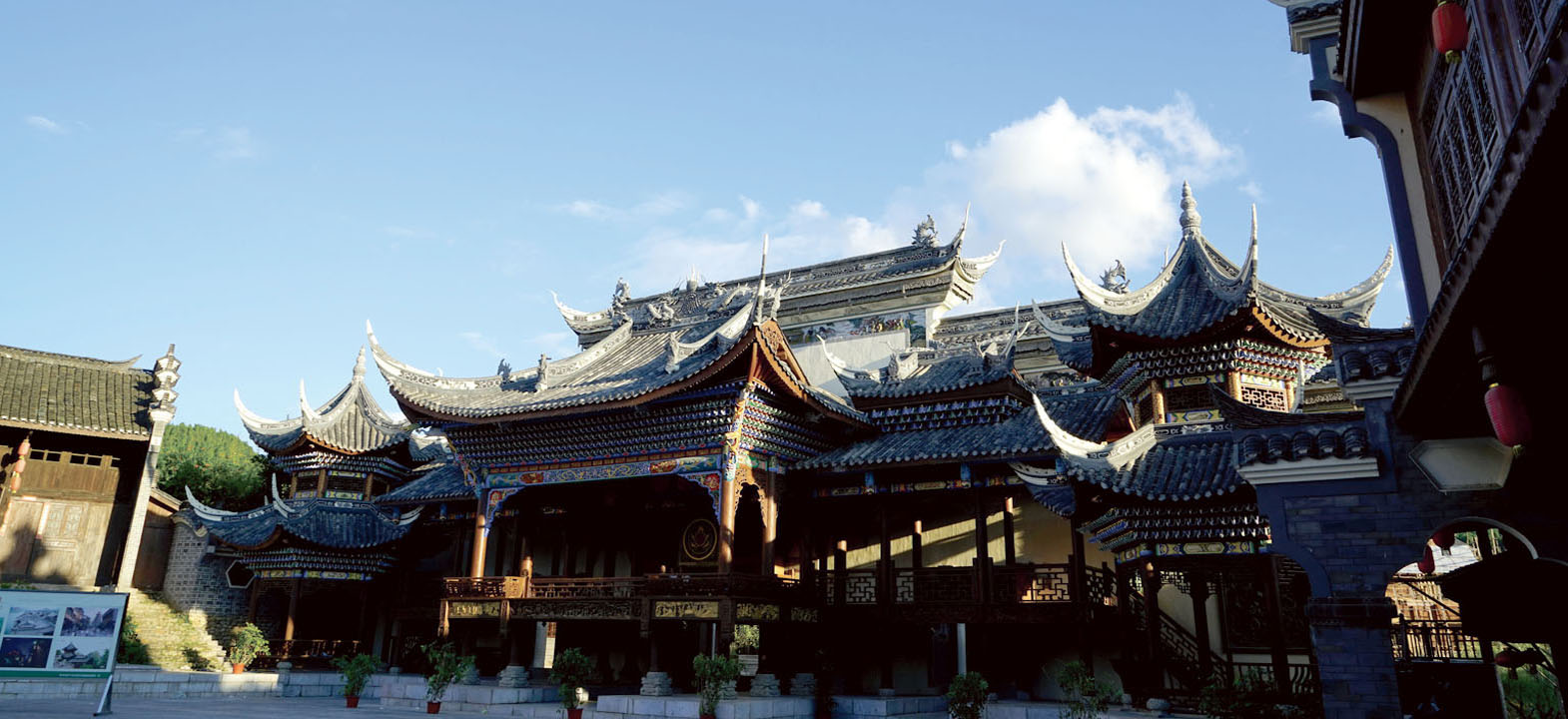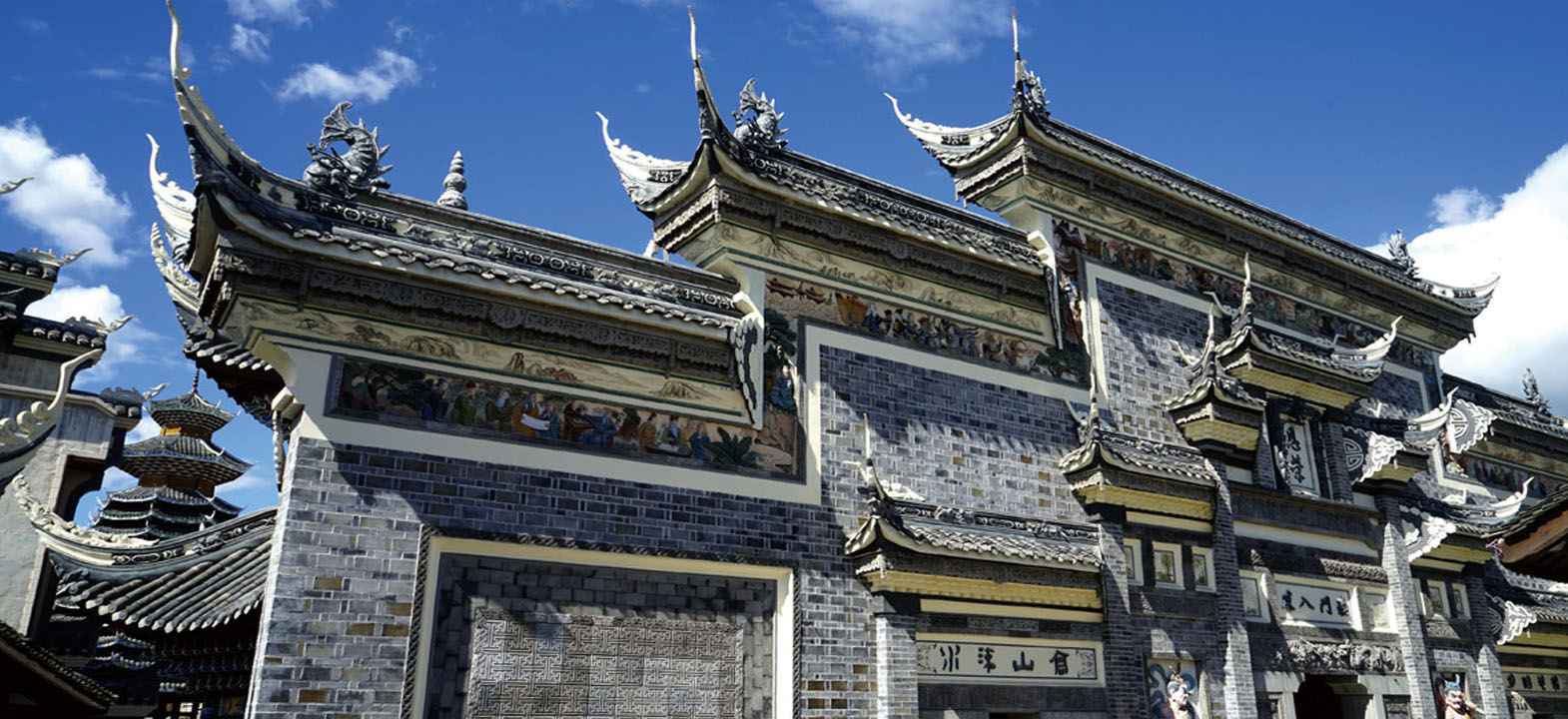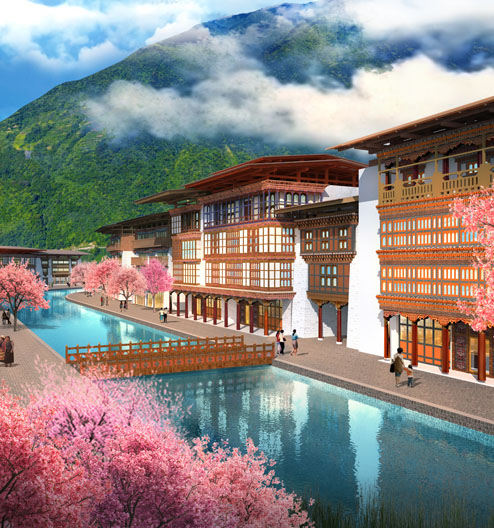Xiasi ancient town
In 2012, entrusted by Qiandongnan Miao and Dong Autonomous Prefecture Planning Bureau, Prof. Chen Keshi and his team carried out the overall urban design, conceptual architectural design and core area landscape design for Xiasi ancient town and its adjacent areas. The planning scheme successfully avoids the construction plan of a highway passing through Xiasi ancient town and improves the value of the ancient town's human geography and natural landscape.
The project is located in the northeast of Majiang County, Guizhou Province, 20 km away from Kaili City in the east and 25 km away from Majiang County in the west. The planned area is about 6 square kilometers, including Xiasi ancient town and Qingshui River, Shanghai Kunming highway in the north, along the Shanghai Kunming high-speed railway in the south, and along the planned north-south trunk road in the east.
It is planned to build an international and complex leisure tourism resort town based on Xiasi business port culture, relying on the landscape garden, with the theme of "Nature landscape ? humanistic Xiasi", integrating Miao, Dong, Han, and other national cultural characteristics with tourism, leisure, culture, vacation, entertainment, creativity, art, residence, business, and office functional spaces.
The planning plan forms a spatial structure with Qingshui River as the link and forest central park as the core, forms seven stars around the moon like green garden city layout, and focuses on building ten functional areas, such as Xiasi ancient town, Yueliang island tourist resort, Miao Dong cultural development zone, etc. The promoter area of Xiasi ancient town is about 8 km2, including more than 350 buildings.
Xiasi ancient town, located in Majiang County, Southeast Guizhou Province, is close to Qingshui River, the mother river of Southeast Guizhou. As early as the Ming and Qing Dynasties, Xiasi ancient town has become the most important commercial port in the upper reaches of the Qingshui River, relying on convenient transportation and unique location advantages, and has many cultural relics. During the period of the Republic of China, it used to be an important material distribution center in Southeast Guizhou, known as a water-land terminal. With the economic development, the appearance of the ancient town has changed, and gradually lost the competitiveness of tourism. The revival of the ancient town has become the only path for Xiasi ancient town.
The landscape of Xiasi ancient town is a rare natural resource, and the farmland and flower field along the river are the natural embodiment of its farming culture. The conceptual urban design of the pilot area divides the green land in the ancient town into four categories: waterfront green land, rural green land, street and lane green land and courtyard green land, and forms a green land system with the courtyard green land as the point element, the street and lane green land and the waterfront green land as the linear element, and the rural green land as the plane element. The large area of rural green land does not only guarantee the production demand, but also helps to develop tourism agriculture. The continuous waterfront green land clearly highlights the advantage of the natural landscape of the ancient town. The abundant green land of streets and lanes creates a good walking environment. As the most flexible part of the green land system, the point green land of courtyard is embedded in the whole area.
Exploring the spatial-cultural mechanism of the ancient town Xiasi is a major premise of form revival. Using the summary of and research on local features and historical data, the urban design has sorted out three clues: the typical layout embodies the thought of ‘the unity of man and nature’ and the spatial texture grows organically; the architectural system completely manifests life of ethnic businessmen in the ancient town; the characteristic space system reflects the culture of the ethnic Miao people. Based on these three clues, the urban design starts from the overall form and stipulates that the height of all buildings in the promoter area is less than 5 floors, mainly 2-3 floors, and all buildings should adopt the small green tile slope roof and wooden facade; for the buildings along the river interface, through the roof reconstruction, railings, eaves columns and decorative components are added to form a continuous, uniform style and distinctive riverside building facade. At the same time, the combination of the ancient town skyline and the distant mountains is fully considered in the urban design. The building height is staggered, and the lower part can form the sight corridor to the mountains, and the higher part can form the visual landscape with the mountains as the background. On the premise of retaining the texture of the streets and lanes as far as possible, the whole streets and lanes are connected in series to form a network like road system.
In addition, the urban design also aims to restore important historic buildings and reshape public space, and determine the steps of revitalizing the shape of Xiasi ancient town from a relatively macro level. The most important public activity place in ethnic villages is the Lusheng field, which is the heart of the whole village. The importance of Lusheng field lies not in its position, but its symbolic significance of the national concept. Lusheng farm, located in the center of the ancient town, is a place for Miao and Dong people to gather for festivals, and also space for residents to dry their grains. After urban design and transformation, the food market, guildhall square and two wharves can continue the original business functions and become a new public activity site. Together with the Lusheng field, they connect the street space vertically and form a multi-level and complete public space system.
At the architectural level, urban design evaluates the safety and style of the whole ancient town buildings based on the three elements of architectural structure, building material, and architectural style. According to the comprehensive evaluation, buildings in the promoter area are divided into five categories, and different solutions are formulated according to the effectiveness and cost of reconstruction, the value and significance of historical buildings, and the texture of traditional streets and lanes.
Miao Dong ethnic culture and business culture are the main characteristics of Xiasi ancient town. First of all, according to historical materials, urban design has restored some influential historical buildings in Xiasi ancient town, such as Zhang Xianpei memorial hall, Xia Tonghe Memorial Hall and Yangming Academy; analyzed the development history of commercial ancient town, and restored the Lianghu guildhall, Guangdong guildhall, and Fujian guildhall in the prosperous period. Secondly, according to the investigation of Miao and Dong ethnic villages' cultural customs, the wind rain bridge with Miao and Dong style was built at the entrance of the ancient town as the landmark, and the Lusheng field and surrounding buildings in the town were restored. Finally, according to the needs of the ancient town residents and the subsequent cultural display, we built the food market and national culture boutique Museum. The urban design aims to establish a dialogue with the past through the restoration of historical buildings and strengthen the current life of the ancient town. The reconstruction of cultural architecture makes historical evolution and real-life coexist and develop in the same space dimension, and then continue to realize the renaissance of ancient town's cultural state.
